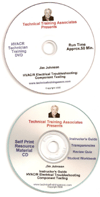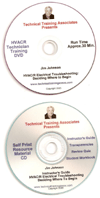This is the conclusion of my series addressing training for buildings where O&M will be outsourced. In July and August, I covered training and documentation required for service contractors. This month, I will address the fact that a building owner may outsource activities and functions, but the owner cannot successfully outsource full responsibility for representing the owner’s interests.
This is not a universal knock on service contractors; it is more of a nod to human nature. No matter how thorough, conscientious, and ethical a service contracting business may be, it is a strong possibility that an uninterested building owner/customer will eventually receive less-than-the-best from that contractor. This can happen in a few ways.
First, an owner who doesn’t have a basic understanding of building systems, their complexities, and the consequences of neglect will be most likely to contract with the lowest cost service provider with the slimmest definition of the services to be provided. In that case, the owner gets what the owner pays for — little or nothing.
Second, and even worse, an uneducated owner may not put a standing service contract into place at all, calling contractors for help only when system performance degrades to the point of negatively affecting the owner’s business. This run-to-failure mentality is sometimes a conscious decision and sometimes simply an oversight.
Third, a building owner may believe he can buy peace of mind and put all system operation, performance, and energy conservation onto the shoulders of a service provider with whom the owner signs a costly service contract. If the owner doesn’t have enough knowledge to know whether or not the contractor is fulfilling the terms of the agreement, then that service provider will eventually make that owner a lower priority. In very general and cynical terms, there are far too many squeaky wheels in the building services industry to knock oneself out for a customer who doesn’t seem to care.
Unfortunately, there are just about zero occupied buildings that need no mechanical and electrical O&M attention. As such, once a business commits to owning a building, the business needs to commit to responsibly maintaining all elements of that building in order to protect the business’s investment. I believe some business owners think of a building as a one-time project (constructing or buying) instead of a long-term obligation.
I am not suggesting that all businesses need in-house mechanical and electrical expertise, but I do believe they need to have an in-house understanding of what it takes to operate and maintain a particular building’s systems. That understanding should be the responsibility of at least one person at a time and should be well documented so that it can be effectively passed from one person to the next when personnel transitions occur.
The Systems Manual (August 2013) developed for the service contractor’s reference may be too technical for the in-house owner’s representative, but the owner’s representative should have it handy at all times and understand in general what it contains. From a day-to-day O&M perspective, the owner’s representative also needs to know what preventive maintenance tasks are required for all of the equipment, sensors, and control devices in the building and how frequently those tasks should be performed. This should be documented in a scope of services matrix as the focal point of the formal service contract.
The key to successfully outsourcing building systems operation and maintenance is an owner’s representative who energetically enforces the terms of the service agreement and demands documentation and/or demonstration of the completion of all required activities prior to paying for them. That takes real time and requires focused training, but it is absolutely necessary if the building owner hopes to sustain the best possible performance from their building system investment.






